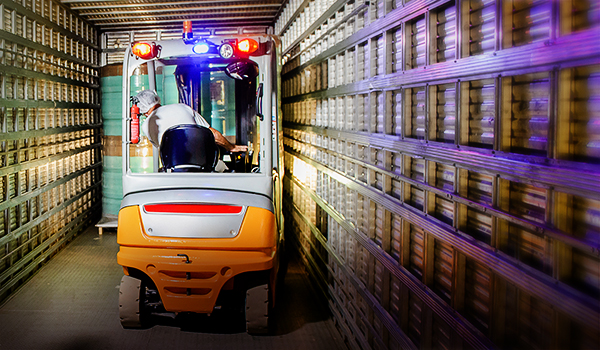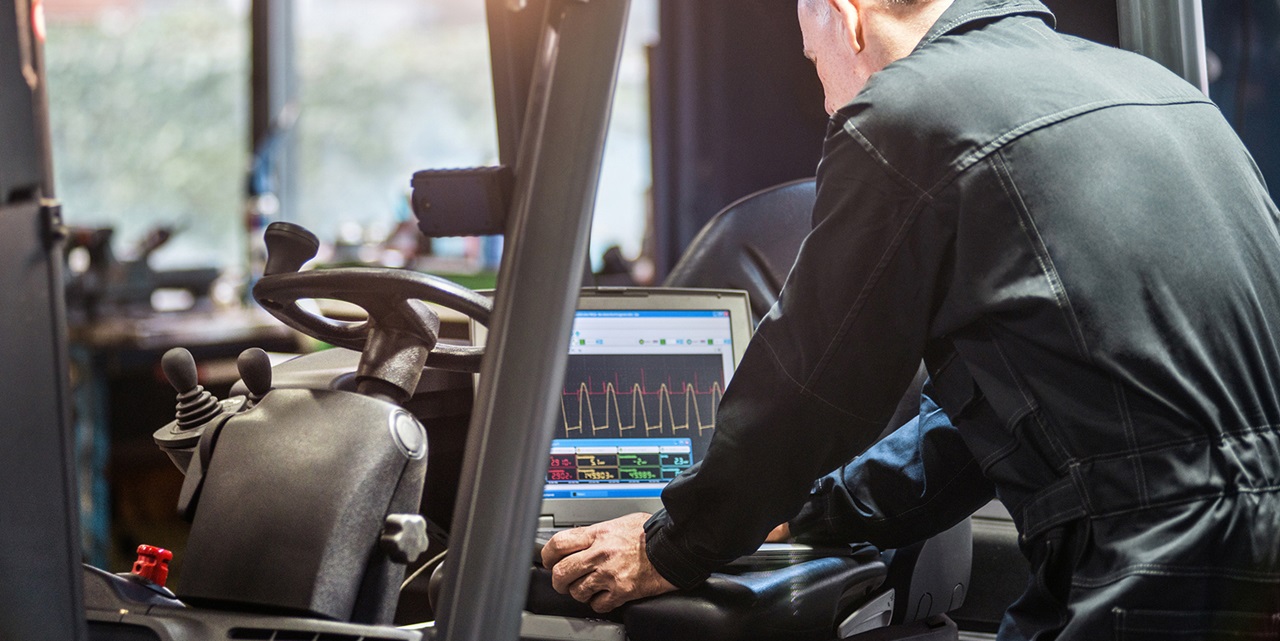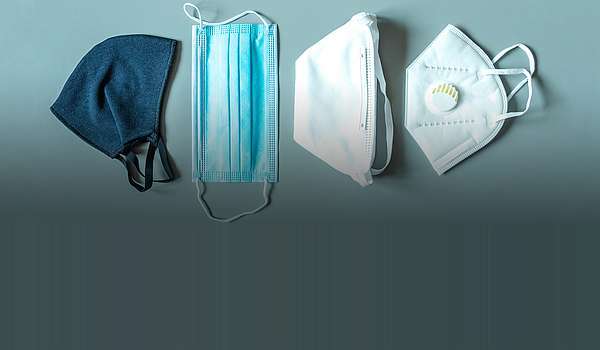In DB Schenker’s shipping terminal in Hörsching near Linz, Austria, forklift trucks are equipped with fuel cells instead of lead batteries. This means that no time is lost due to battery changes while CO2 emissions from the forklift fleet have been reduced. Freudenberg Performance Materials provides a key component for the efficient and environmentally friendly drive package: the gas diffusion layer.
Forklift 4 is a robust and reliable worker. The fire-red pallet truck purrs quietly and industriously through the corridors of the DB Schenker shipping terminal in Hörsching near Linz. It grabs a pallet of packages, steers towards the waiting truck and uses its arrow-shaped fork tips to place the consignment into the loading area.
For the approximately 30 people who work in the 8,000 square meter goods handling center, forklift trucks are their most important tool: 22 of them are on hand to help with unloading, moving and transferring goods. A carbon fiber nonwoven made by Freudenberg increases the drive power of the forklifts and helps ensure that the team can continue to cope with their workload. More than 1,100 trucks with 180,000 packages dock at the terminal every month, with each package weighing an average of 184 kilograms. Most are destined for addresses in Germany. “Productivity increases or decreases depending on how quickly and effectively a driver loads the cargo”, explained Thomas Ziegler, Managing Director of DB Schenker’s Linz site.





